Here at Art Business News, we had the pleasure to interview Artexpo New York 2022 Exhibitor and artist, Val Tarsia for our Meet the Artist Series.
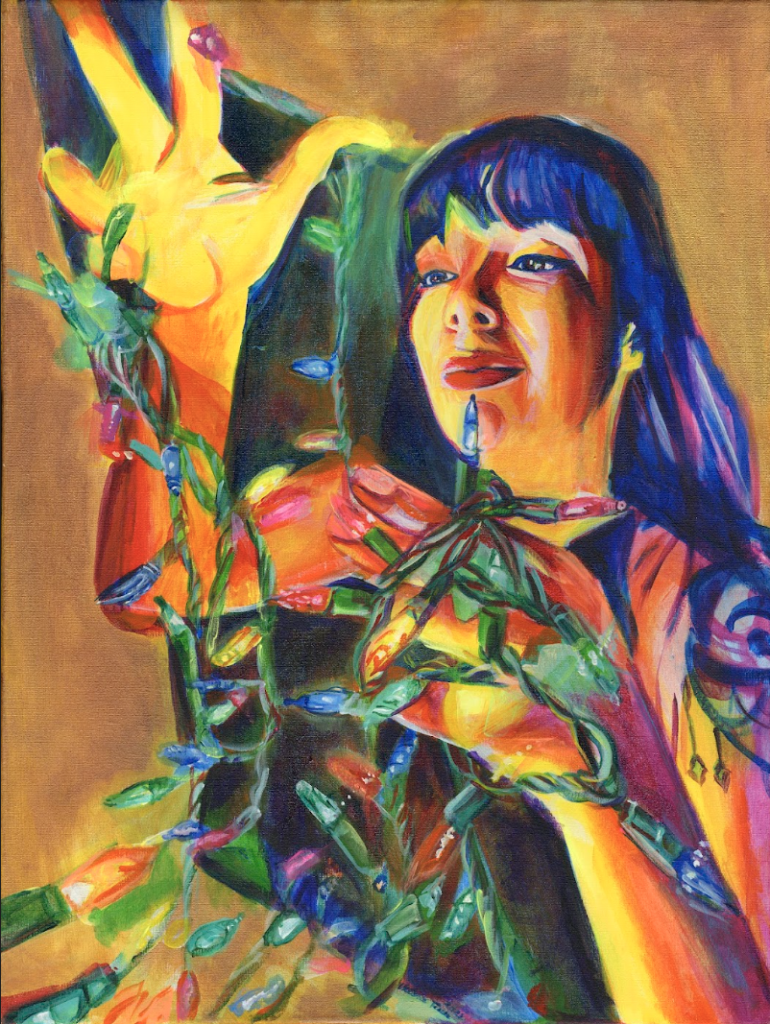
Reflecting Lights
Q: Who are you and what do you do?
A: My art is a representation of my surrounding environment including culture, science, medicine and art. I paint acrylic themes on canvas creating a story, or views from a different perspective as if you the audience are part of a dimensional slice in the foreground. I like to manipulate time, space and color. After a few paintings, I felt something was missing from a plain blue seascape or neutral-colored portraits. I wanted the audience to be excited and a part of the painting as much as me. So, I developed each painting more dramatically, until it was an exaggerated perspective, saturated color, utilizing all the canvas space.
Over the years, I explored neon paints, black light art, metallic shimmers and bold contrast. That is what makes painting fun for me. Unapologetically, I detailed the canvas from corner to corner so that it takes a while to look through, discovering new foci that you may not have seen the first time you looked at it, and allowing it to change in different wavelengths of light.
Each piece represents a piece of my life, but is relatable and interactive with a wide audience. Years of working in medicine sparked the last series on front-line health workers who deserved a highlight as well as a splash of color. The first thing people notice is color popping prior to the extreme foreshortening and depth pulling them in. Some other series include a musical breadth, from years of living and playing with musicians, or months of traveling the world, especially the gold-laced Thai series. After years of living in Manhattan, I dedicate a recent group of work to the youthful and inspiring NYC.
Q: What is your background?
A: I am grateful for my parents’ encouragement from as soon as I could glue stick cotton balls to construction paper. From high school superlative “most artistic” to studying college art and architecture in Rome, I minored in Fine Arts, while pursing a medical degree. I am grateful that my long emergency shifts provided long free days for me to continue painting. I started sharing to Art of Emergency Medicine Volume 15 and 24. During Covid I was involved in Art Council of Rockland Virtual show, which was encouraging during an isolated covid time. I shared some medical front line worker portraits at Van der Plas Gallery “Under the Mask: A Metamorphosis”. To then hosting a booth at Rave Artexpo New York this year. I have no plans to stopping. I’m currently working on a fun NYC series, and continuously painting even better medical provider portraits.
Q: How do you work?
A: Friends and family are used to me stopping at a flower or asking them to bend their elbow dramatically towards my camera, “because I have an idea”. I digitally sketch layers of photos that I want to paint. Once I have an outline of my sketch that engages top to bottom, into the plane and out towards the viewer, also is bright and busy, and has equal negative and positive space, I’m satisfied. Some days a work in 3 hour sessions, and some days I work 8 hours obsessively, with small breaks to eat or drink. I started using acrylic paints so I can work quickly, dry quickly, and store easily in a small NYC apartment. I use blending medium and extending agents to allow my colors to mix, however, I like crisp complementing colors. I can’t imagine using nude tones for skin colors, I haven’t in my portraits in years. We were trained to use magenta, yellows and cyan for skin tones, and I love using them to complement each other especially in the past years of our community focusing beyond skin color. The content I paint is frequently split into multiple canvases, forming diptychs, triptychs, and quadtychs. Some are split into multiple scenes or separating one scene into two canvas.
Q: What art and artist do you most identify with? How have they influenced you?
A: I attribute my perspective inspiration to Caravaggio’s “The Conversion on the Way to Damascus”, which I saw lit from within at the Santa Maria del Popolo in Rome. I thought to myself, “how dramatic” in perspective, light, and emotion. My colors are inspired by fauvism, and I really wanted to dramatically use primary colors as compliment to each other adding my own flare with neon at times. Leonardo Da Vinci is a recurrent admiration because of the scientific incorporation, and I feel compelled to bind my medical scientific life with painting and art. I couldn’t leave out Salvador Dali, because of his inspiration to use real objects in a surreal way. I don’t want my paintings to just be a photograph, I want them to be something only I could create like a dream on canvas.
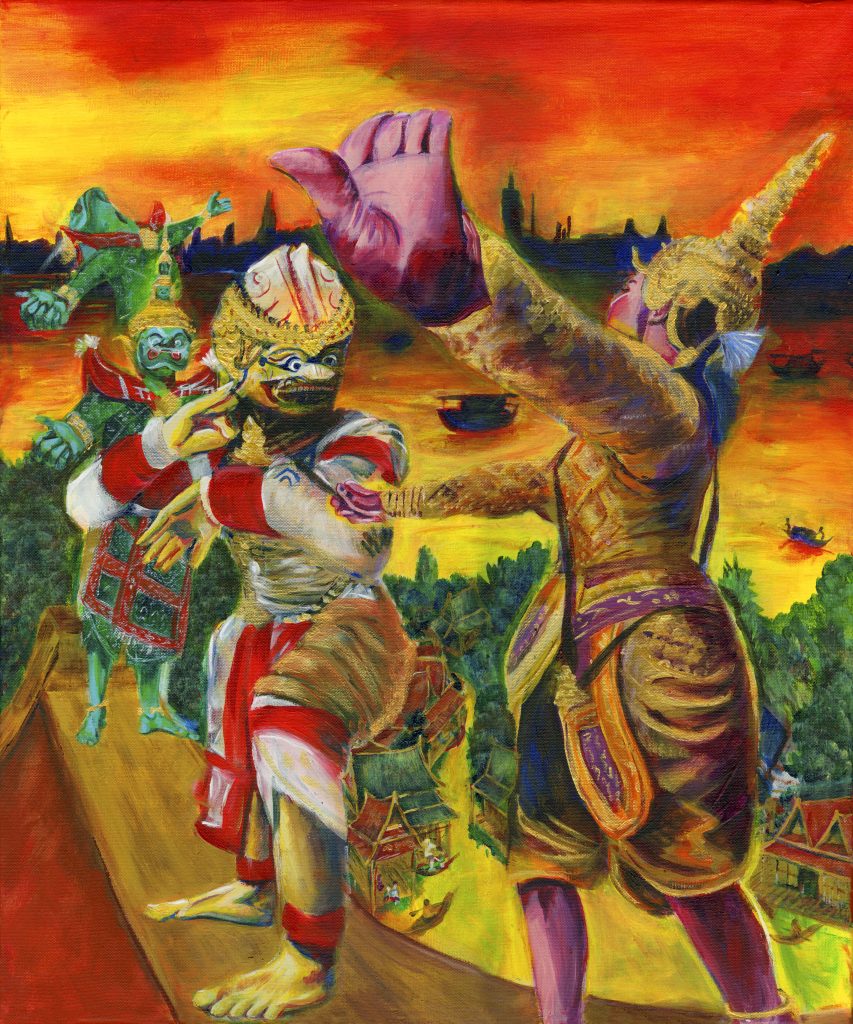
Thai Gods on Rooftop
Q: What has been your favorite experience so far as an artist?
A: The opportunities to show my work lets me see the audiences response in person. I kept a handheld blacklight next to a series of paintings, and as they searched for the glow, their mouth’s dropped. You may not have been to Thailand, or work in medicine, but the shared joy of color is what connects us. When the audience loves my work and commissions a piece, the subject may not be my own, but I put my own flare and share creativity with a collector. The happiness it provides people is worth each brushstroke. I started painting expressing myself and documenting my experiences and I’ve grown to communicate beauty through art.
Q: What is the best advice you have received?
A: The art world is difficult to navigate as a new artist. I have been fortunate to share my work at shows, and in magazines. At Art Expo NYC, I was surrounded by artists that have been traveling and showing their work for years. Even if I don’t sell, the feedback I receive from the audience, co-workers and other artists encourages me to continue painting. The more I paint, the better I get, and the more I learn about myself and my creativity.
Q: When you are now working, where can we find you?
A: I love to paint, but I do work in the emergency room, treating patients as a physician assistant. My inspiration not only comes from this, but I take time to travel and experience different culture and landscapes. A lot of my sketch ideas come from around the world. The spark to paint comes from pictures I take while traveling.
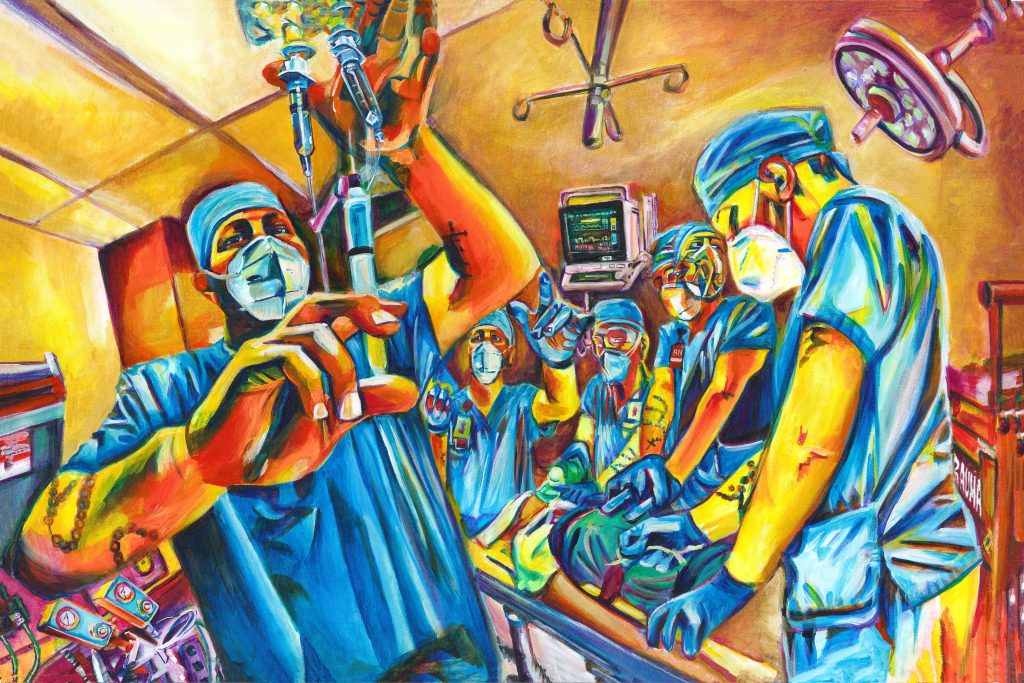
Saving Lives
Q: How has your career as an artist shifted during the past two years? And did the pandemic have an influence on your art?
A: I was working three days a week in a busy ER, and on days off I would paint or travel. Once the pandemic hit, no one could travel. So I continued to work, watching frontline heroes save lives and risk their own. Which inspired me to paint them. I created a whole series dedicated to them, which was featured in AMA Journal of Ethics, “Covid Care in Color”. And all I did was paint on my days off. This inspired me to focus on painting, and join more shows to share my work. The best thing about the pandemic for me is opening up free time for me to settle into my creativity. In turn, the painting is what kept me grounded and sane on recouping days. Lockdown during the pandemic is mainly the reason I have developed my artistic style. The series of medical workers that I painted are historical for the times our ER staff has been head to toe covered in PPE gear to protect us while we secure the airways of the Covid-infected community.
Emergency Room 2020 is a painting of the stacked patients, FDNY continuously wheeling in Covid- ventilated patients for our emergency staff to save. This painting is like a dream, but really a nightmare. The other portraits of frontline workers are dream-like, questioning reality, interdimensional and interactive as if you the audience were the patient. Saving Lives is one of my favorite paintings of a front-line nurse performing multiple tasks from CPR, to inserting an IV.

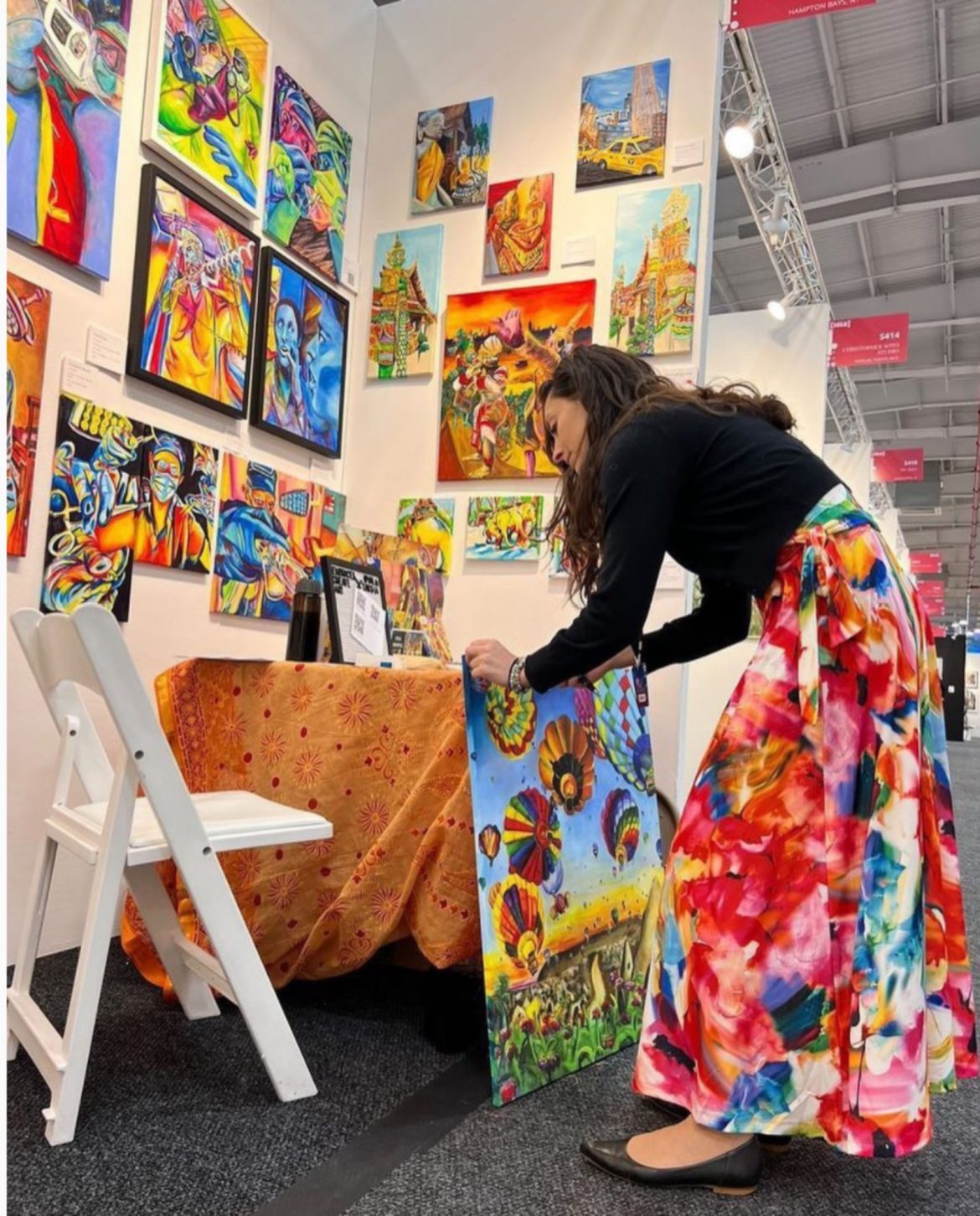

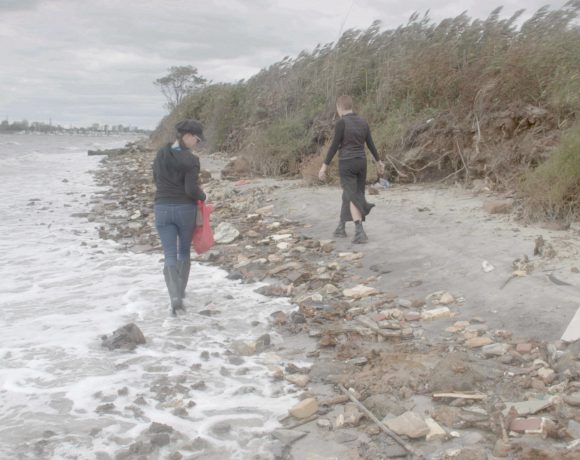





NO COMMENT